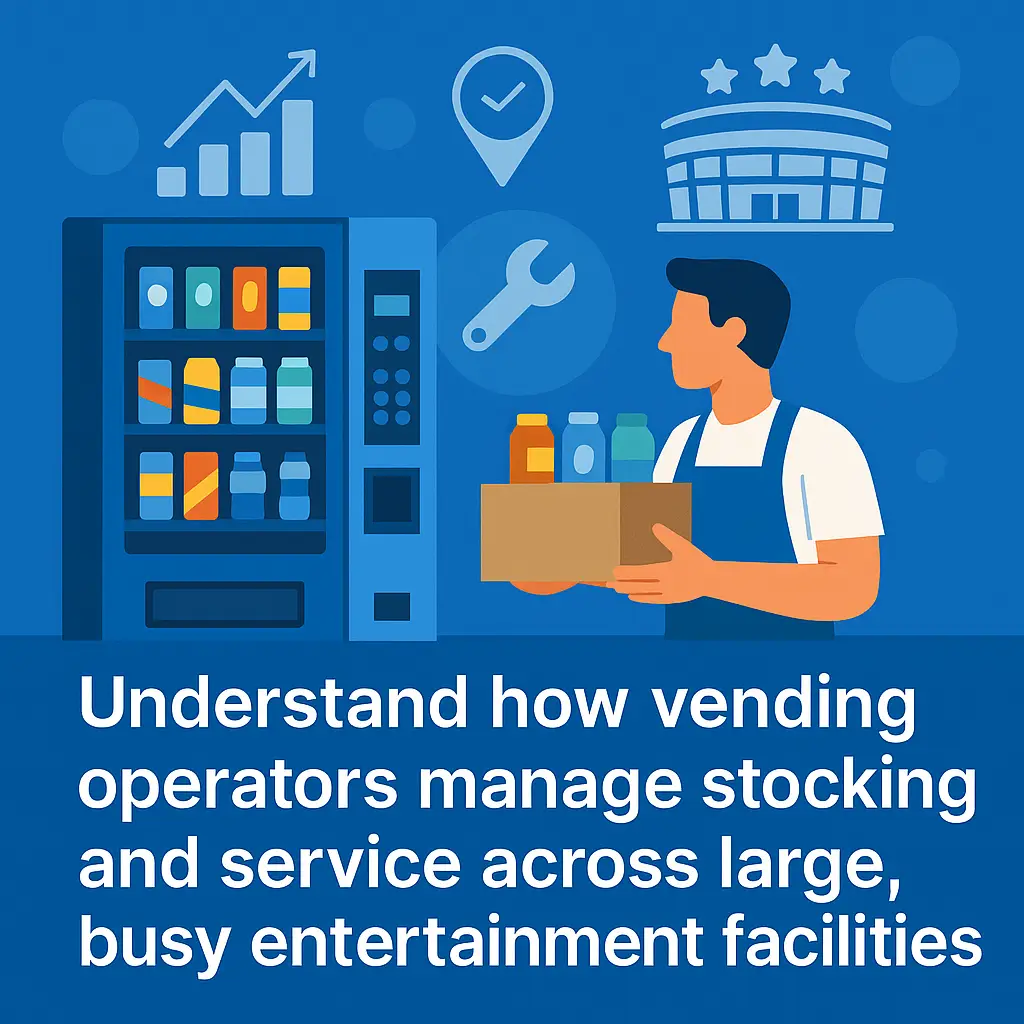Managing Vending Logistics in Large Entertainment Venues
Understand how vending operators manage stocking and service across large, busy entertainment facilities.
Back to Vending for Entertainment Venues ResourcesUnderstand how vending operators manage stocking and service across large, busy entertainment facilities.
Back to Vending for Entertainment Venues ResourcesThrough data-driven scheduling, strategic placement, and flexible service plans, vending logistics are optimized to support fluctuating crowds and event-based demand.
![]() Pre-event stocking minimizes out-of-stock items during peak periods
Pre-event stocking minimizes out-of-stock items during peak periods
![]() Telemetry and sales data inform efficient restocking and assortments
Telemetry and sales data inform efficient restocking and assortments
![]() Placement and power planning keep lines moving and machines reliable
Placement and power planning keep lines moving and machines reliable

Large entertainment venues present unique logistics challenges: high, concentrated demand during events, complex floor plans, and varying power or refrigeration needs. Effective vending logistics focus on forecasting demand, ensuring machine reliability, and coordinating with venue schedules. For an overview of the operational model commonly used in busy public locations, see what full-service vending entails.
Telemetry and sales analytics drive efficient restocking. By analyzing past event performance and real-time sales, teams can prioritize machines that need topping off before intermissions or during multi-performance days. Building restocking routes around event schedules reduces travel time and prevents stockouts during peak windows. For insights into benefits specific to event spaces, read this guide to vending in entertainment venues.
Logistics for large facilities often include flexible service windows and on-call response for critical outages. Remote diagnostics help identify issues quickly so interventions can be prioritized during shows. Planning for mobile or temporary stations can also relieve congestion at primary machines during high-attendance events.
Refrigerated units need reliable power, ventilation, and secure placement away from pedestrian bottlenecks. Early coordination with venue operations ensures machines are sited for visibility without blocking egress or service areas. For examples of placement strategies in public facilities, see vending programs in government buildings.
Cashless payments reduce cash handling and speed transactions during intermissions. Secure cash protocols and frequent collection schedules remain important where cash is accepted. Implementing multiple payment methods improves throughput and visitor satisfaction.
Large venues cater to diverse audiences, so assortments should include quick snacks, bottled beverages, healthier choices, and items for dietary needs. Clear labeling and ADA-compliant placements make vending accessible for all visitors. For guidance on offering healthier selections, consider healthy vending best practices.
Vending Exchange can help simplify logistics planning—fill out the short form on this page to start a conversation about tailored vending strategies for your venue.
Restocking is scheduled around event timelines, with pre-event top-offs and targeted service after peak periods based on expected attendance.
Through pre-event stocking, additional temporary stations when needed, and real-time inventory monitoring to prevent stockouts.
Telemetry provides real-time inventory and sales trends that inform restocking frequency, product mixes, and placement decisions.
Use demand forecasting, dynamic assortments, and align stock levels with the venue's event calendar to avoid overstocking.
Refrigerated units require adequate power, ventilation, and space planning; these requirements should be coordinated in advance.
Place machines on concourses, near entrances, and by seating clusters with clear signage while avoiding choke points and emergency pathways.
Implement secure collection routines, sealed cash boxes, frequent pickups, and encourage cashless payments to reduce risk.
With remote diagnostics, issues can be identified quickly and prioritized; venues often arrange rapid response for high-attendance events.
Consider electrical permits, food safety and handling rules, placement approvals, fire code compliance, and ADA accessibility standards.
Ensure ADA-compliant placement, clear labeling, varied product assortments including dietary options, and multiple payment methods.